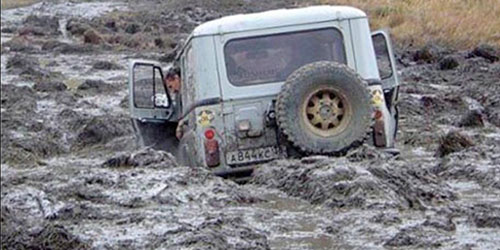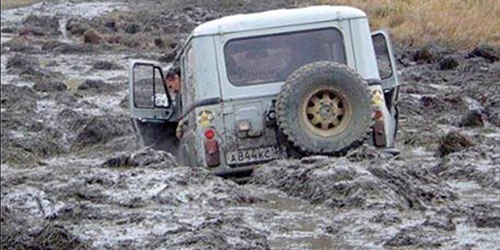-
A New England terms feels appropriate around the world
In the New England countryside, April is known as Mud Time1 or Mud Season. In 2019, this coarse nickname applies to a much broader geographic area.
Many macro indicators show impeded economic progress as countries spin their wheels in the mire. Yet, a few indicators like REIT prices and tech stocks are surprisingly robust. Thus, the April outlook for property markets is as clear as, well, mud. Structural and political shifts – the fallout from the Mueller investigation, the countdown for the Brexit negotiations, and the next stages of the China-US trade disputes – are all incontrovertibly caught up in the ooze of April as well.
Structural and political shifts – the fallout from the Mueller investigation, the countdown for the Brexit negotiations, and the next stages of the China-US trade disputes – are all incontrovertibly caught up in the ooze of April as well.

The Brexit deadline of 29 March was averted with just days to go. Instead, this date became the occasion of a failed third attempt to pass a Withdrawal Agreement in the UK. At first glance, the short April 12th postponement becomes the default base case. This story is not yet over. Here’s what we know: The vast majority of Parliament wants to avoid a “crash-out” scenario. The EU leadership does not want to be seen as a villain and have called for an emergency summit on April 10th. Parliament is running out of options with just 12 days to go. The Tory party is effectively without a leader capable of exercising party discipline. The capital markets (FX, FTSE 100, EuroFirst 300) are taking the latest Parliamentary setback in stride. All these facts lead us to conclude that a protracted Brexit process is still the most likely case, even though the odds for a hard Brexit have gone up and a crash-out is still possible.
Recent “risk-off” capital market trends reinforce the importance and benefits of long-term income-focussed investments. In Europe, major economies such as France, Germany and Italy are slowing. Negative-yielding bonds have surpassed $10 trillion, or about 20% of worldwide investment-grade debt. Growing economies like the Netherlands, Poland, Spain and Sweden are all past their peak expansion. And in all these countries, investors are hungry for income-generating property investments with relatively low risk.
Manufacturing PMIs (Purchasing Manager Indices) have also fallen below 50 (showing contraction) in China, Germany and Japan. This is a serious threat to the world’s three largest exporters of tangible goods. Strong momentum in the US economy contrasts with slowing throughout the rest of the G-20. But the US Federal Reserve’s recent guidance for holding interest rates steady indicates that they see trouble ahead. In short, the perception of risk today is higher, as implied by the flattened or inverted term structure of sovereign bonds around the world.
Nevertheless, investment into real estate has been high and sustained, with reports of considerable dry powder waiting to be deployed. We caution readers not to put too much faith in these “wall of capital” estimates, since the GFC showed how quickly the wall can crumble. Our macro deck does not show that another financial crisis is imminent. It does indicate that risks to fundamentals are rising, even though real estate pricing has not adjusted – probably because risk-free rates have fallen. Finally, a close look at the April deck reveals it is also a good time to relieve stress through humour.
[1] Robert Frost’s “Two Tramps in Mud Time” contains stark economic themes; it was published in 1934—in the midst of the Great Depression.

Jul 01, 2025
PERE: Q&A with Global CEO Mark Gabbay
LaSalle’s Global CEO sat down with PERE to discuss the world’s simplest, most complicated asset class.




